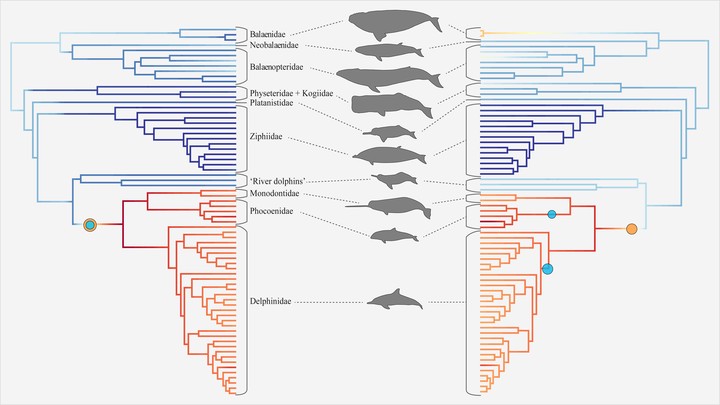New paper on cetacean backbone ecomorphology and evolution

The first chapter of my PhD has been recently published in the journal Proceedings of the Royal Society B: Biological Sciences!
In this work, we investigated the link between the backbone morphology of cetacean and their ecology and evolution. We combined an extensive dataset of regular morphometrics collected on more than 70 species of extant cetaceans to cutting-edge phylogenetic comparative methods to shed light on backbone adaptation.
Our results demonstrate that vertebral morphology is linked to cetacean ecology (i.e., species living in offshore, coastal or riverine environments): species living in shallower habitats tend to have lower vertebral count and more elongated vertebral centra.
In addition, we show that extant cetaceans have followed two distinct evolutionary pathways relative to their ecology. Whereas most offshore species such as baleen whales evolved towards an increased body size while retaining a low vertebral count, small oceanic dolphins underwent deep modifications of their axial skeleton with an extremely high number of short vertebrae. The comparison of these results with diversification rates of cetaceans provide evidence that these morphological modifications acted as key innovations that promoted the explosive radiation of small-sized cetaceans.
Read more: https://doi.org/10.1098/rspb.2019.1771